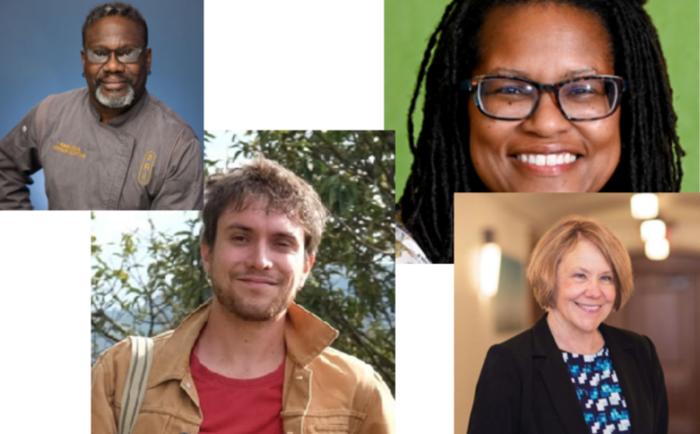This year’s Presidential Symposium places plant science within a larger context, spotlighting the connections between plants and humanity. Accordingly, ASPB President Gustavo MacIntosh selected speakers with a broad array of backgrounds and expertise. Yet when the Presidential Symposium takes place Saturday, August 5, at 1:30 pm, you’ll find they agree on critical fundamentals.

Credit: ASPB
This year’s Presidential Symposium places plant science within a larger context, spotlighting the connections between plants and humanity. Accordingly, ASPB President Gustavo MacIntosh selected speakers with a broad array of backgrounds and expertise. Yet when the Presidential Symposium takes place Saturday, August 5, at 1:30 pm, you’ll find they agree on critical fundamentals.
“Humans are totally dependent on plants for food,” began Barbara Schaal of Washington University.
“When it comes to agriculture, plants and people are really two faces of the same coin,” added Matteo Dell’acqua of Scuola Superiore Sant’Anna. “In a sense, when we domesticated crops thousands of years ago, they domesticated us too. So much human history has been shaped by the opportunities and constraints of agriculture.”
“I grew up on a small farm in in North Carolina, and I’ve always been fascinated by plants,” said Terri Long of North Carolina State University. “Now I’m lucky enough to work with people in all kinds of disciplines, all focused on developing new tools and techniques for addressing societal problems associated with food, fiber and fuel.”
“It’s plants that are constantly telling us what’s going on in the world,” CheFarmer Matthew Raiford observed. “For example, where I see dollar weed – you may know it as penny wort – growing, I know there’s excess water in the ground.”
“It’s nature and culture,” affirmed Dell’acqua. “I’m a quantitative scientist, coming from plant genetics. When we started looking at the genomics of agrobiodiversity while factoring the traditional knowledge of smallholder farmers, we saw immense capacity for enhancing local well-being and promoting sustainable development.”
“Gardening and farming exploded during the pandemic,” continued Raiford. “The number of plants planted was monumental. We had to return to nature, to the land. All kinds of people drew comfort from plants. They also thought, oh, this snake plant helps improve the air in my home. The world went crazy for plants.”
“We need that diversity of skill sets, and a diversity of perspectives, to really address the grand challenges in our society related to plant sciences,” said Long. “We need people from all walks of life, from all disciplines – not just physiologists and molecular biologists, but social scientists, mathematicians and economists. We’re all part of the answer to the question of how we will continue to provide for a growing population.”
“I also believe interdisciplinary science is needed to answer today’s challenges,” Dell’acqua said. “They can’t be answered by focusing on a narrow field of research. I am striving to connect the dots.”
“The potential for developing new plant varieties and species with greater nutritional value, adapted to changing climates, is incredibly exciting,” said Schaal. “One way it could be done is by combining traditional but underutilized species with advanced plant breeding and gene editing.”
“We spray chemicals on pigweed,” Raiford mentioned. “But it’s an amaranth that can be used in the dish callaloo.”
The speakers also agreed they’re looking forward to all the opportunities of Plant Biology 2023. “I really want to hear where the plant science world is relative to regenerative agriculture,” said Raiford. “A lot of the time we throw away roots that can continue to grow – lettuces, celery, pineapple, green onions. How many other plants are like that? Can this change how we think about food systems?”
“On a personal level, I’ve made some wonderful friends in this field, and I hope there are many more out there to meet,” said Long.
Read the plenary description, and see more scientific content in the complete Plant Biology 2023 program.
###
ASPB is a professional scientific society, headquartered in Rockville, MD, that is devoted to the advancement of the plant sciences worldwide. With a membership of some 3,000 plant scientists from throughout the United States and around the world, the Society publishes two of the most widely cited plant science journals, The Plant Cell and Plant Physiology, and co-publishes the Open Access journal Plant Direct. ASPB also hosts the annual Plant Biology conference; supports plant science outreach, engagement, and advocacy; and powers the Plantae digital ecosystem for plant scientists. For more information about ASPB, please visit https://aspb.org/. Also follow ASPB on Facebook at facebook.com/myASPB, on Twitter @ASPB, and on LinkedIn at https://www.linkedin.com/company/98656.




